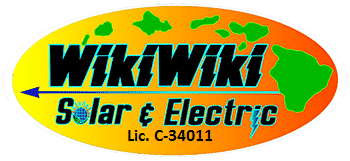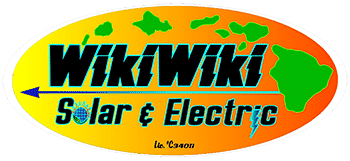Where Does Electricity Come From, Exactly?
What a great question! You likely already know that electricity is what powers your home, your office, and just about everything else in the modern world today (thanks, Edison). But where does electricity itself actually come from, and how is it made?

Recall from your high school science class that the center of an atom contains the nucleus, which holds particles called protons and neutrons. Protons and electrons of an atom are frequently swiping right on the Tinder of an atom, each carrying with it an electrical charge. Electrons closest to the nucleus of the atom maintain a strong attraction to the protons, whereas electrons closer to the outermost shell of the atom can be pushed off course and shift from one atom to another. These shifting electrons are then the very source of electricity itself, and these electrons are then in need of an outlet in order to be harnessed for power.
Electricity as we think of it in our daily lives is actually a byproduct, or a second energy source, that is produced from the conversion of these electrons from other initial sources such as fossil fuels, wind, solar power, etc. These are the primary sources of energy, and must be broken down by the appropriate process, e.g. coal being burned (environment: boo, hiss) or renewable energy processes, e.g. solar power (hooray!). Electricity must travel in a closed circuit, or a completed path, before the electrons can successfully navigate through it. Viewed through the lens of the modern home, when you turn a light switch on, you are in effect closing a circuit which allows for these electrons to do their thing, and allowing for electricity to travel through the wires to provide electrical power to your devices, appliances, and fixtures.
From the wider perspective, the electricity that flows to your home can be provided in a number of different ways. The electric company typically generates the power that they sell from their own power plants or generators, which produce electricity on a large scale and route it to their customers, over what we refer to as the grid system: power lines, substations, transformers, et. al. Typically, this energy is largely produced by non-renewable resources to provide electrical power over the system. On the other hand, renewable energy sources such as solar power utilize natural and sustainable primary sources of energy to provide electrical power. When the sun’s light hits a solar panel, it jars loose the electrons from their atoms and allows for electrons to pass through the PV cells to generate electricity.
With the cost of electricity rising year after year, and the fossil fuel industry laying waste to our environment, now is the time to invest in the awesome power, savings, and convenience of renewable, solar-powered energy. Go ahead and send us your current electricity bill and let us show you just how much solar can do for you!
Bonus: for the keikei, here’s a primer on the process of creating electric energy! https://www.youtube.com/watch?v=20Vb6hlLQSg


